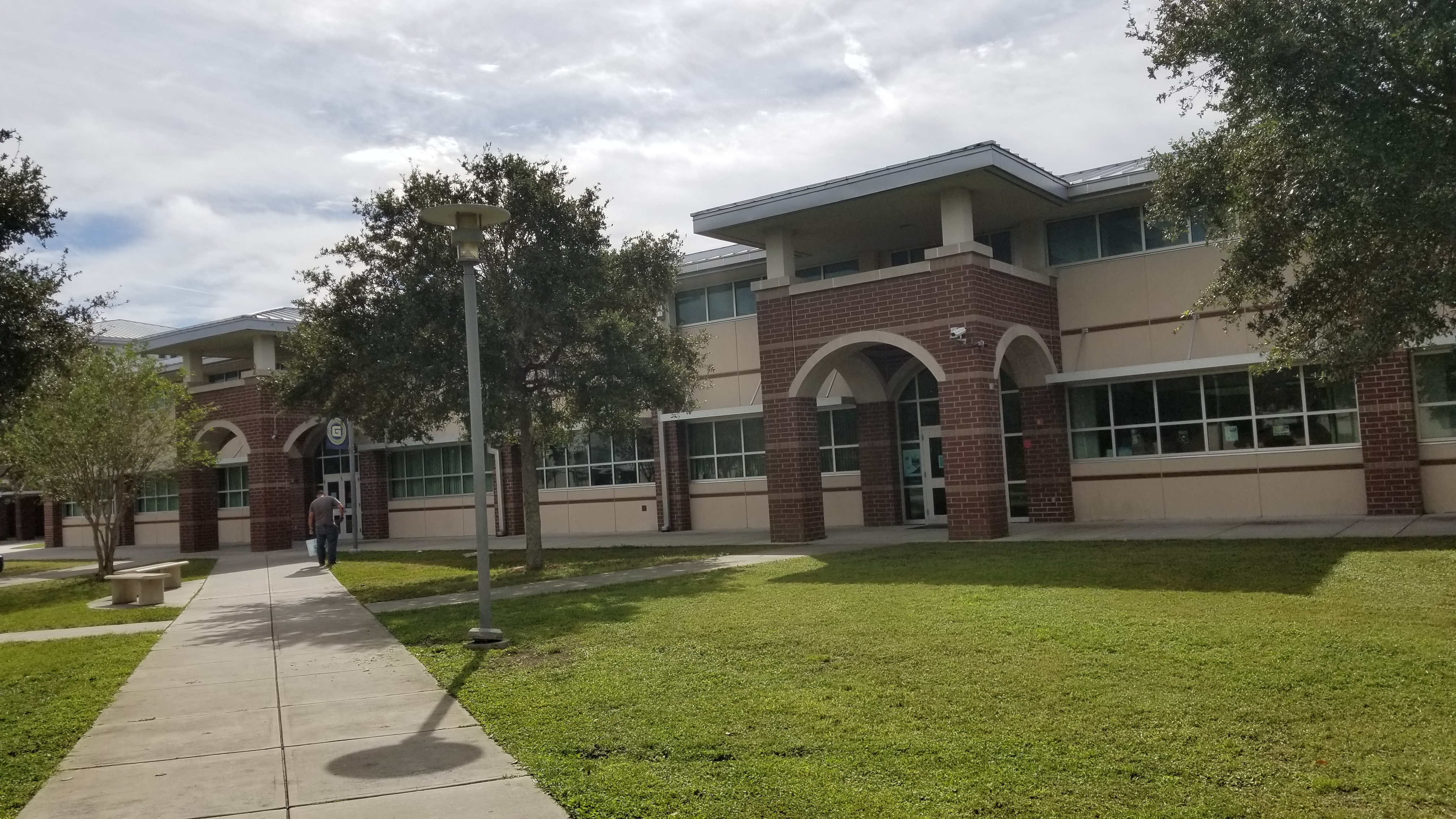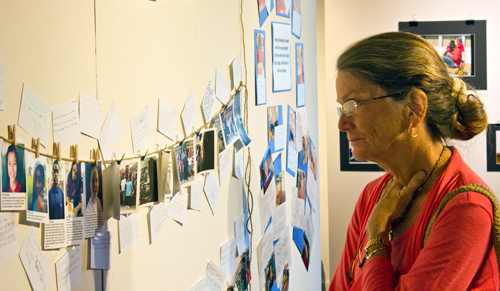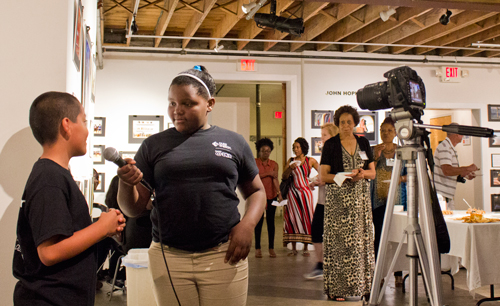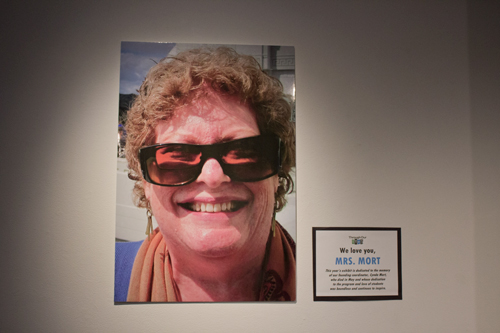By Andrea Perez
The Environmental Protection Agency says that lead levels below the action level don’t require public action, but 45 homes in the St. Petersburg Midtown area tested positive for lead in the water.
Most of the homes that were tested contained very low traces. However, according to the EPA, any amount of lead is dangerous, especially for young children under the age of six.
A journalism class, the Neighborhood News Bureau (NNB), class from the University of South Florida St. Petersburg (USFSP) St. Petersburg worked with students at Academy Prep to conduct the testing in the fall of 2016. Each student took home vials to collect water with specific instructions based on a protocol developed by the same Virginia Technological University’s laboratory that tested the water of Flint, Michigan during the water crisis.
The analysis was conducted by Kelly Quinn, a research associate at the USF College of Marine Science. The chosen method was much more rigorous than St. Petersburg’s program, which tests 50 homes at random every three years based on a contested EPA protocol. St. Petersburg was one of the cities exposed by a report published by The Guardian on June 2, 2016 as one of the cities “cheating” on water testing protocols.

Students at Academy Prep were asked to acquire three draws from their homes and their neighbors’. The first draw required the water to be unused for six to eight hours, which gives an accurate indication of how much lead accumulates in the water as it sits in the pipes. The other two draws measure lead levels after water has been flushed.
Kevin Riskowitz, the interim manager of the city’s environmental compliance division said that the city’s lead testing program only takes one draw. The EPA typically only tests water using the first draw as well.
The EPA says that concerned homeowners can test their own homes, which ranges from $20 to $100 in cost.
“As Midtown fits with the characteristics of most of the communities affected by lead poisoning in their tap water, I believe that it would be good to make sure children (and adults) were not in danger”, said Dr. Bernardo Motta, a USFSP assistant professor who initiated the collaboration between the Neighborhood News Bureau class and Academy Prep.
Sources of the toxic metal can be found in water that travels through lead pipes, which are common in old homes, and in pipes that contain parts made of or welded with lead, which can be found in homes built until 1986. The natural corrosion of these pipes compounds the issue. The result is water containing a trace amount of lead in consumable tap water.
To alleviate the problem, John Palenchar, the interim director of St. Petersburg’s Water Resources says that the city uses corrosion control. This method of water treatment creates calcium buildup in the pipes. Calcium helps to slow the corrosion process.
Palenchar attributed the problems in Flint, Michigan, to the lack of proper corrosion control.
In 1986 lead piping installation and repairs nationwide were banned under the amended Safe Drinking Water Act, but many homes in St. Petersburg still have old piping systems held together by lead solder.
Seven of the homes tested by Academy Prep students that came back above 1 part per billion were built before 1986.
At 2.1 parts per billion on average, the amount of lead found in St. Petersburg’s water supply is low. The EPA’s guidelines mandate that action is taken if levels are found to be above 15 parts per billion.
Even the house with the highest amount of lead in the water tested below the EPA’s action level with 13 parts per billion in the first draw.
Per EPA standards, the city must take action if five or more of its 50 samples come back above the action level of 15 parts per billion.
According to the EPA, in children, low levels of lead exposure are linked to damage to the nervous system. Symptoms and permanent health effects include learning disabilities, impaired hearing and impaired function of blood cells.
“It doesn’t matter what level is found on the sample tests, my main concern is always numbers,” said Cynthia Keeton, a lead poisoning prevention coordinator for the Florida Health Department in Hillsborough County.
Although blood lead concentrations below five micrograms aren’t recognized as threatening to the body, Keeton believes that such levels should be lowered to zero in all children’s cases.
The Academy of Pediatrics recently reported that cognitive deficits and behavioral problems can occur at blood lead concentrations below that level, making the case for preventive measures at home even more urgent.
“Food is the thing that gets the lead out of a child’s body. They need to eat rich foods in iron and calcium. You have to put that back in the body. There’s no quick fix unless this child’s blood lead level gets to be 45, they have to go to the hospital. Otherwise, a crucial diet is the solution,” Keeton explained.
Children enrolled in Medicaid receive a blood lead screening test at 12 and 24 months, and those who are between 3 and 6 years of age must also be tested if they haven’t before.
According to the Centers for Disease Control and Prevention, blood tests that monitor for lead levels range from $10 to $75.
Young children, in many cases, tend to be picky eaters, which makes the absorption of lead higher, due to an empty stomach. Keeton details that in the end, her main responsibility is to educate parents as key players against lead poisoning, even if it’s challenging.
“You got to get parents to do their part. It takes a parent who has had a lead poisoned child, and knows what it does to the families, to take action sometimes,” she said.
The city’s Community Redevelopment Plan (CRA) currently offers funding programs to property owners who want to upgrade old plumbing systems. Only properties that are considered “affordable housing,” or where an income by a number of people living in the household is between $33,050 to $69,856, can qualify to receive the grant. According to the Funding program, the minimum investment must start at $10,000.
Based on data collected by Neighbourhood News Bureau student’s in 2016 and 2017 last year, many properties can be individually eligible for the grant. However, in order for seven house pipe systems, built before 1986, to be replaced, homeowners would have to invest in the project privately. To apply for the grant, homeowners need to have the full money for the job and then use the grant for reimbursement.
Moreover, replacement of corrosive pipelines may also be covered by an income-based mortgage loan through the city Housing and Community Development division, which has primarily worked on roof repairs, lead-based paint mitigation, and electrical hazards.
There are many options besides pipe repair and replacement to reduce the amount of lead found in water. For most homes with low-level lead-contaminated water, a filtered pitcher will suffice. According to the EPA, one of these simple pitchers costs about $20 but requires maintenance at various time intervals to ensure that the filter’s quality doesn’t degrade over time.
In October, Keeton visited A Perfect Start Early Learning Childcare Center located in Tampa, as part of the National Childhood Lead Poisoning Prevention Week program. Children between the ages of four and six asked her about the toxin, as she guided them through preventive steps to take in their homes and avoid consuming lead at all costs.
Although she’s currently the only staff member of the Childhood lead poisoning and healthy homes program visiting child care centers in Hillsborough County, and orienting children and parents about prevention methods, she explains she’s able to work efficiently because the County facilitates a lead poisoning screening map that identifies 25 zip codes across high-risk areas.
“Inner cities always have more lead because of the age of the houses. The zip codes tell me exactly where I need to be going. I target certain zip codes at certain times of the year too, like in the summer when children are more prone to be outside, they are very much exposed to lead”.
According to Hillsborough County’s Reportable Diseases Frequency Report, powered by the Florida Department, 79 cases of lead poisoning have been confirmed in 2018. Last year a total of 132 cases were reported, and four were identified in minors varying from newborns to four-year-olds.
Unlike the Hillsborough’s preventive program, the Florida Department of Health in Pinellas does not follow up with lead cases based on screening maps.
“For children normally pediatricians routinely screen for lead at their 12 and 20-month visit”, explained epidemiologist Rebecca Bohinc. According to Bohinc, who’s in charge of all reportable lead cases through the County’s Disease Control and Health Protection Division, even if a child lives in a high-risk area that isn’t monitored, pediatricians will normally conduct blood tests.
In Pinellas County, between 2017 and 2018, 23 cases have been confirmed and only two cases of lead poisoning have been traced back to newborns up to the age of four.
Keeton’s recent visits to the Tampa neighborhoods coincide with a recent amendment of the Lead-Safe Housing for Kids Act of 2017 (S.1854). The bill, which excludes lead found in tap water, aims to protect children living in federally assisted housing from lead-based poisoning.
The bipartisan bill, if passed, would require Housing and Urban Development (HUD) to ensure mandated risk assessments for lead-based hazards in low-income housing constructed prior to 1978 before a family moves in.
The Childcare Center on East 21st Ave is neighboring with older houses built pre 1978 that have lead-based paint, as Keeton explained. Three blocks south from the Center, two uninhabited houses showed noticeable paint chips and lead dust on their walls and railing.
“If I were to go up here and touch this area, that’s where the lead is. A family probably lived here, in this condition and moved recently”, she said referring to an uninhabited house on 14th Ave, just a few feet away from the highway traffic of I-4.
Pinellas County, however, has not been nearly as proactive as Hillsborough. Pinellas doesn’t have a counterpart for Keeton’s position or a process for mitigating lead poisoning that resembles Hillsborough’s current program.
Ryan Callihan and Evy Guerra contributed to this story.














